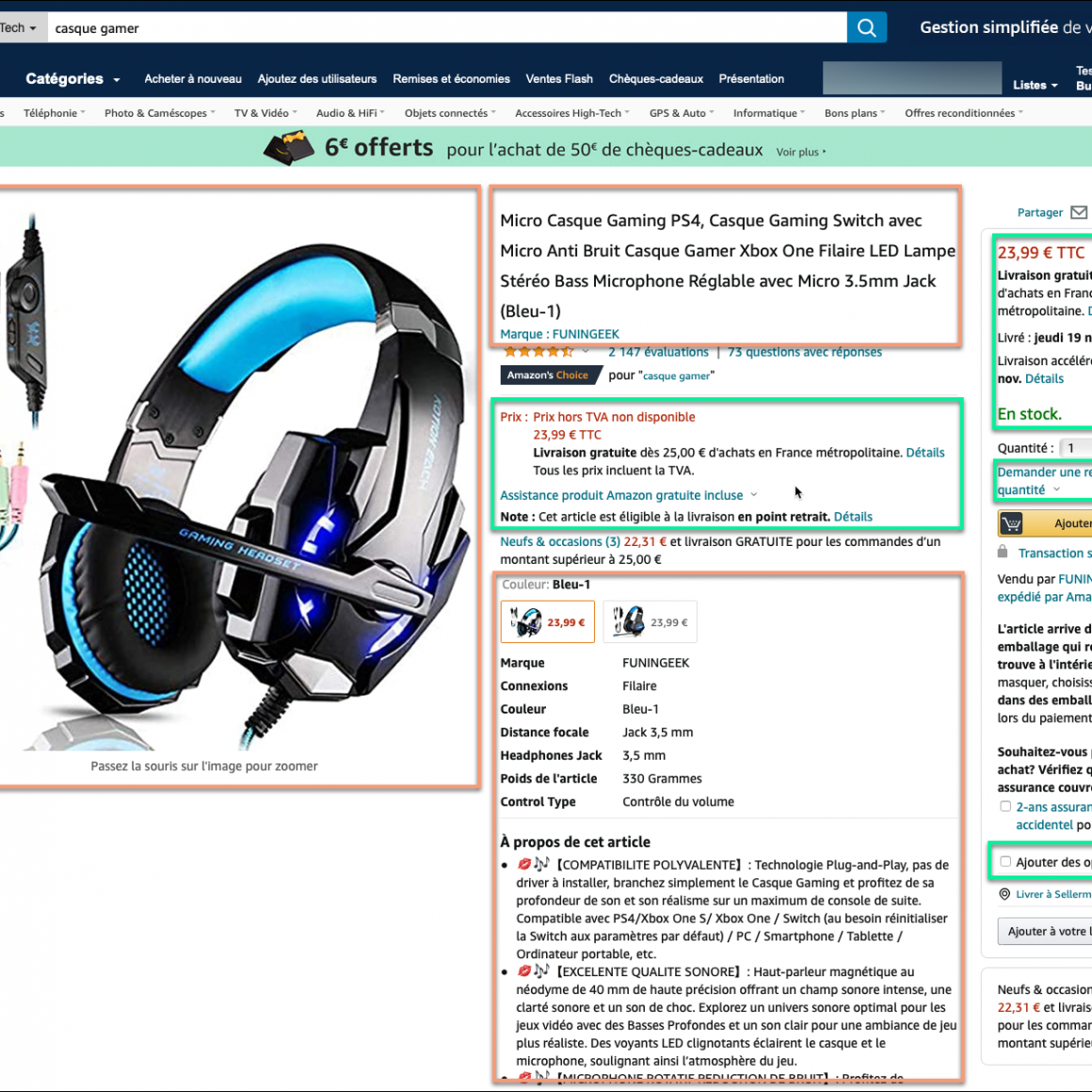Your product catalogue generally comes from an e-commerce site (Prestashop, Magento, Drupal, Woocommerce, proprietary site, etc.), an ERP, a PIM, or a simple Excel file.
It contains all your references, with two types of information: product information, which describes the item sold, regardless of the merchant, and offer information, merchant specific, which describes the sale price, stock, the delay etc.
Descriptive information of the products:
- EAN code
- Title
- Mark
- Description
- Image link
- Category
- Keywords
- Specific attributes used to describe the article
- etc.
Offer information:
- Quantity in stock
- Selling price
- Delivery time
- Terms of delivery
- etc.
In red, product information, and in green, offer information:

It is important that product information and offer information are clearly distinguished. Shipping costs should not be found in item descriptions, or your website address on product images. The descriptive information of the products will be used to create article sheets on the marketplaces sites, and they must therefore be independent of your offer information, and be content to describe the items sold.
Some marketplaces require a relatively high level of detail to describe items, multiplying attributes such as length, weight, gender, colour, etc. It can quickly become complicated if the product feed does not contain enough information to fill these attributes. Likewise, if this information is not easily identifiable in the product flow, because it is mixed in the description of the items, for example, this makes the integration complex.
The richer the product flow, the easier the integration into marketplaces will be.
The format of the file itself, whether CSV or XML, is usually of little importance, although often CSV is more convenient.
